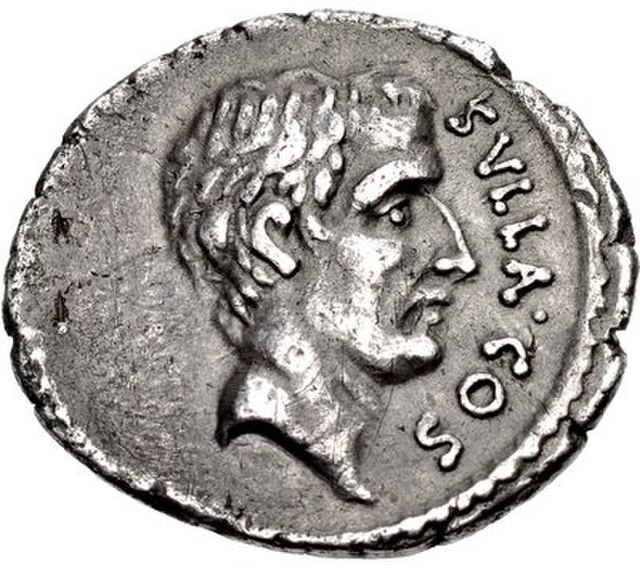Gaius Cassius Longinus was a Roman senator and general best known as a leading instigator of the plot to assassinate Julius Caesar on 15 March 44 BC. He was the brother-in-law of Brutus, another leader of the conspiracy. He commanded troops with Brutus during the Battle of Philippi against the combined forces of Mark Antony and Octavian, Caesar's former supporters, and committed suicide after being defeated by Mark Antony.
The "pseudo-Corbulo" bust, likely depicting Cassius
Denarius (42 BC) issued by Cassius Longinus and Lentulus Spinther, depicting the crowned head of Liberty and on the reverse a sacrificial jug and lituus. From the military mint in Smyrna
Gaius Julius Caesar was a Roman general and statesman. A member of the First Triumvirate, Caesar led the Roman armies in the Gallic Wars before defeating his political rival Pompey in a civil war, and subsequently became dictator from 49 BC until his assassination in 44 BC. He played a critical role in the events that led to the demise of the Roman Republic and the rise of the Roman Empire.
The Tusculum portrait, possibly the only surviving sculpture of Caesar made during his lifetime
Gaius Marius, Caesar's uncle and the husband of Caesar's aunt Julia. He was an enemy of Sulla and took the city with Lucius Cornelius Cinna in 87 BC.
Sulla, depicted on a coin minted by Quintus Pompeius Rufus in 54 BC. Sulla took the city in 82 BC, purged his political enemies, and instituted new constitutional reforms.
Bust, from the imperial period, of a man – in this case Augustus – wearing the civic crown (Latin: corona civica). Caesar won the civic crown for his bravery at the Siege of Mytilene in 81 BC.






